Active detector gamma-ray and neutron (ADRON) for Luna-Resurs and Luna-Glob missions
-------------------------------------------------------------------------------------------------------------------------------------------------
-------------------------------------------------------------------------------------------------------------------------------------------------
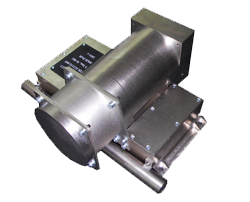
The task of the instrument is to measure the local (near the landing site) elemental composition of the lunar surface using active neutron and gamma-ray spectrometry.
The experiment is currently under development within the Russian projects Luna-Glob and Luna Resurs under the Agreements between Federal Space Agency of the Russian Federation and Lavochkin Association. Launches of the spacecrafts are scheduled for 2021 and 2023.
ADRON is specifically aimed at measuring neutron and gamma-ray fluxes during the interplanetary cruise to the Moon and at lunar surface.
ADRON is developed to study the composition and content of major rockforming elements in the lunar soil in the immediate vicinity of the landing site, as well as to study the stratified structure of the lunar soil with a spatial resolution of ~1 m.
To achieve the stated goals we use neutron probing (bombardment of the soil with high-energy neutrons) together with the neutron and gamma-ray spectroscopy (registering neutron and gamma-ray response in various energy ranges with a high time resolution).
ADRON will be used in an active experiment for pulse neutron probing of lunar matter onboard Landers. The instrument will allow to receive data of the lunar surface composition up to 1 m deep immediately near stationary Lander. These data will be used to study origin of the lunar surface, to compare lunar samples brought back to the Earth with the average surface composition up to 1 m deep, as well as to search for minerals and resources, presumably available for mining.
In this mode the neutron generator module emits powerful neutron pulses with the energy of 14 MeV, every pulse of up to 2 microseconds long consists of approximately 107 neutrons. These neutrons are emitted isotropically, and their significant part (around 30–50%) penetrates lunar soil immediately under the Lander to the depth of around 1 m. These neutrons interact with soil nuclei, and excite them via inelastic scattering reactions (being hit by a neutron a nucleus gets excited and then falls back to the ground state after emitting gamma-ray quantum with a specific energy), and then are absorbed by these nuclei via capture reactions (being hit by a neutron a nucleus captures it, gets into an excited state of another isotope, which then falls back to the ground state after emitting a gamma-ray quantum) (Fig. 1)..
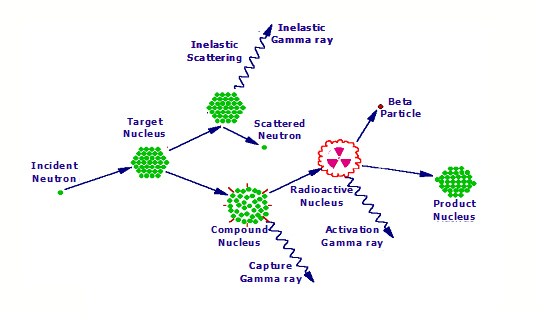
Fig.1.Physical scheme of neutron probing in order to define composition of the sample
Thus, emitted gamma-rays travel from the surface, and their spectrum represents nuclear composition of the lunar soil (Fig. 2). Remaining neutrons are moderated in the lunar soil and get back from the surface with energies close to the thermal energy of the soil, and their flux strongly depends on the hydrogen content in the regolith. Hydrogen nuclei are protons, whose masses are about the same as those of neutrons, so that even a small share of hydrogen in the regolith increases neutron moderation efficiency substantially.
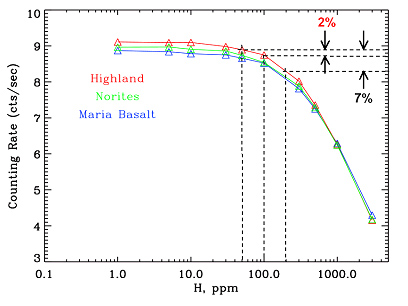
Fig. 2. Dependence of epithermal neutron flux from the lunar surface (indicated as a count rate registered by a neutron detector) on hydrogen content in the latter (H in ppm)
The more hydrogen there is in the soil, the scarcer are epithermal neutrons and the more abundant are thermal neutrons in the outcoming flux. Epithermal neutrons flux falls rapidly with the increase in the hydrogen concentration, so that measuring epithermal neutron flux from the surface generated by high-energy neutron pulses shall be considered an effective way to estimate hydrogen (i.e. water) content in the lunar soil.
The pulsing mode of irradiating the soil with neutrons allows to study stratified structures in the nuclei distribution down to the depth of around 1 m. Outcoming moderated neutrons reach the surface within considerable time (around 1 millisecond) due to diffusion, and the stratified deposition of hydrogen influences the profile of outcoming neutron flux significantly.
The neutron generator does not work in a passive mode. In this mode neutron and gamma-ray detectors measure natural flux of lunar neutron and gamma-ray emission, which emerges due to interactions with galactic cosmic rays or solar energetic particles emitted during solar proton events. The data obtained in the passive mode will allow to assess natural neutron and gamma-ray background in the polar region where the spacecraft is expected to land and compare it to measurements made in other lunar regions as well as to the data obtained in orbit around the Moon. Gamma-ray measurements in the passive mode could be also used to estimate the abundances of primordial radioactive isotopes of K, Th, and U. It is well known that the K and Th relative content remains constant for all lunar samples, which were returned to the Earth earlier, and it also remains the same when measured from the orbit (Fig. 3). However, one might expect that near the poles this ratio may change due to peculiarities of polar regions' formation and a close location to them of the gigantic Aitken impact crater.
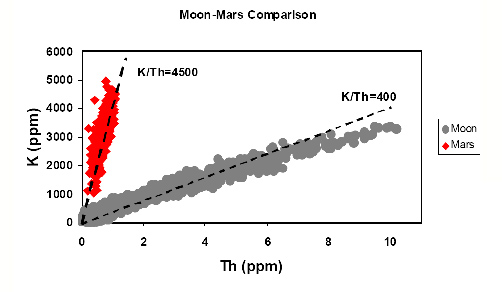
Fig. 3.The difference between the distribution ratios of natural radioactive isotopes on surfaces of the Moon and Mars
ADRON instrument is a unique development of IKI RAS and does not have counterparts abroad. Its prototype is the DAN instrument, developed by IKI RAS for being mounted aboard Mars Scientific Laboratory automated rover (NASA). DAN shall run pulse neutron probing of the Martian surface along the MSL traverse to look for regions with enhanced water content in the surface shallow layer. Prior to DAN acceptance as a part of the MSL's scientific payload by NASA, it was compared to other variants of similar instruments developed by Western scientific centers. As a result, DAN was acknowledged to surpass similar foreign instruments in its lifetime and neutron pulse intensity. These advantages are applicable to the neutron generator ADRON-PNG to the same extent.
ADRON exploits new type of a scintillation detector on the basis of LaBr3 to register gamma-ray emission. This detector possesses an extremely high spectral resolution of around 3% at 662 keV in comparison to other scintillation detectors, thus the gamma detector unit will comply with the most advanced world scientific achievements in this field.
ADRON includes detector module (Fig. 4), pulsed neutron generator (Fig. 5).
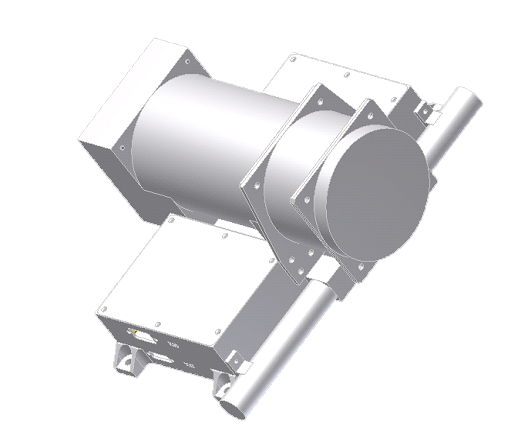
Fig. 4.DE module of the ADRON instrument
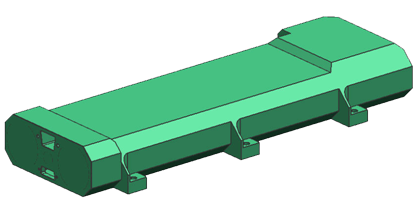
Fig. 5.Pulsed generator of the ADRON instrument
The ADRON-LR composition is shown in Table 1.
Table 1
| № | Unit or module name | Task |
| 1. | ADRON-PNG pulsed neutron generator | ADRON-PNG is a separate module, aimed at generating neutron pulses with energies of around 14 MeV to irradiate the lunar surface at the landing site. |
| 2. | ADRON-DN Neutron detector unit | ADRON-DN is an integral part of the ADRON-DE module, and it is aimed at registration of epithermal and thermal neutron fluxes in the active working mode together with the generator, as well as in the passive working mode while measuring natural neutron background at the landing site. |
| 3. | ADRON-GD Gamma detector unit | ADRON-GD is an integral part of the ADRON-DE module, and its task is to register and carry on spectral analysis of the gamma-ray flux in the active working mode together with the generator as well as in the passive working mode while measuring natural neutron background at the landing site. |
| 4. | ADRON-ME electronics unit | ADRON-ME is an integral part of the ADRON-DE module. Its task is to generate secondary power supply for the instrument's units, to control its performance, to process and transmit scientific and service telemetry data to the spacecraft, to monitor and test subsystems and nodes of the instrument. |
The instrument will measure the following parameters (see Table 2) during the lunar cruise phase and on its surface.
Table 2
| Physical value | Measured parameters | Measuring unit |
| Thermal and epithermal neutron flux | Neutron count rate in the energy range of 0.025 eV – 1.0 keV | STN detector |
| Epithermal neutron flux | Neutron count rate in the energy range of 0.4 eV – 1.0 keV | SETN detector |
| Gamma-ray spectrum | Gamma-ray spectrum in the energy range of 100 keV – 8 MeV with the energy resolution not less than 3% at 662 keV line of 137Cs with the time resolution of up to 1 microsecond | GRS detector |
For the ADRON-DE module serially produced proportional counters on the basis of 3He are used (to register neutrons). Similar devices were also used in Russian HEND, NS HEND, DAN, MGNS scientific instruments (developed by IKI RAS). The ADRON-DE electronics is based on the design developed for the instruments mentioned above and successfully tested for long-term work in space and/or during ground tests. Main differences of the ADRON-DE module from the DAN-DE module concern the use of the scintillator on the basis of LaBr3 crystal.
The DE unit includes the following nodes:
- two detectors STN and SETN on the basis of proportional neutron counters. Detectors differ from each other by their external shields made of cadmium (for SETN) or lead (for STN).
- scintillation unit, comprising a cylinder-shaped LaBr3 detector and a photomultiplier.
- electronics nodes.
| Mass : | 3.8 kg — ADRON-LR-DE 2.6 kg — ADRON-LR-PNG |
| Power consumption : | 4.5 W — DE 14 W — PNG |
| Dimensions : | 270 x 215 x 110 mm — DE 340 x 125 x 45 mm — PNG |
| Energy ranges : | 0.025 eV – 1.0 keV (neutrons) 100 keV – 6 MeV (gamma rays) |
| Energy resolution (gamma rays) : | 3% at 662 keV |
| Time resolution : | from 1 mks |
| Surface resolution : | ~3 m |
| Depth resolution : | ~1 m |
| Telemetry : | 20 Mb per day |
Funding Agency — Federal Space Agency of the Russian Federation.
Primary contractor — Space Research Institute of the Russian Academy of Sciences (IKI RAS).
Principal Investigator — Dr. Igor Mitrofanov.
Works on the ADRON-LR project are carried out on the basis of the State contract №361-9870/09 of March 16, 2009 (R&D theme MSP «Luna-Resurs»).
Works on the ADRON-LR project are planned for 2009–2020 (development, tests, assembling, and instrument delivery) and 2021–2022 (operating and data processing).
| Federal State Unitary Enterprise 'N.L. Dukhov All-Russia Research Institute of Automatics' (VNIIA, Moscow) |
Neutron generator module development for the ADRON instrument. |
| 'N.M. Fedorovsky All-Russian Scientific Research Institute for Mineral Raw Materials' (Moscow) |
Development of scintillation units for neutron and gamma registration. |
| Joint Institute for Nuclear Research (Dubna, Moscow region) |
Numerical modeling of ADRON counting parameters; participation in the development of ADRON physical scheme; preparation for and calibrations of the instrument. |
| A.A. Blagonravov Institute for Engineering Science of the Russian Academy of Sciences (IMASH, Moscow) |
Development of the mathematical model of the instrument’s mechanical structure; participation in the development of testing facilities for the ADRON instrument in accordance with the NASA requirements; development of the mechanical test program; support of the instrument models’ testing. |



